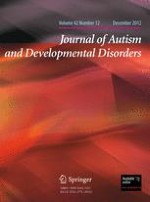01-12-2012 | Original Paper
Dialogic Linkage and Resonance in Autism
Gepubliceerd in: Journal of Autism and Developmental Disorders | Uitgave 12/2012
Log in om toegang te krijgenAbstract
We evaluated how children with autism make linguistic adjustments when talking with someone else. We devised two novel measures to assess (a) overall conversational linkage and (b) utterance-by-utterance resonance within dialogue between an adult and matched participants with and without autism (n = 12 per group). Participants with autism were less able to establish ‘cognitive linkage’ with an interlocutor. As predicted, only among children with autism was there a positive correlation between the ability to link in with speaker’s meanings and ratings of emotional connectedness with the conversational partner. Participants with autism were not less likely to show a basic form of dialogic resonance across successive utterances (the ‘frame grab’), but more often elaborated their responses in an atypical manner.
